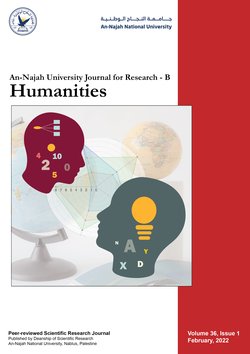The Household Structure in the West Bank and Gaza Strip
Authors:
Article info
1998-09-26
1999-12-12
1999-12-12
93 - 124
Keywords
Abstract
The aim this study is to analyze the type of the household and its variation in the West Bank Gaza Strip, according to the 1995 Demographic Survey carried out by the Palestinian Central Bureau of Statistics. The results-of this study shows that the nuclear family is the most common in the Palestinian Society, but this type is more common in the West Bank in Gaza Strip. The household in the Gaza Strip is characterized by its large size comparison with the West Bank, because of the variation oftl1e level of fertility. Thus, the Palestinian Society lies in the youth stage according to the demographic transition theory. The monogamy is the most common type of marriage in the West Bank Gaza Strip. The mean age at first marriage is higher in the West Bank than in Gaza Strip for both males and females.
Ahmad, H. (1999). The Household Structure in the West Bank and Gaza Strip. An-Najah University Journal for Research - B (Humanities), 14(1), 93–124. https://doi.org/10.35552/0247-014-001-004
[1]H. Ahmad, “The Household Structure in the West Bank and Gaza Strip,” An-Najah University Journal for Research - B (Humanities), vol. 14, no. 1, pp. 93–124, Dec. 1999, doi: 10.35552/0247-014-001-004.
Ahmad, Hussein. “The Household Structure in the West Bank and Gaza Strip.” An-Najah University Journal for Research - B (Humanities), vol. 14, no. 1, Dec. 1999, pp. 93–124. Crossref, https://doi.org/10.35552/0247-014-001-004.
1.Ahmad H. The Household Structure in the West Bank and Gaza Strip. An-Najah University Journal for Research - B (Humanities) [Internet]. 1999 Dec;14(1):93–124. Available from: http://dx.doi.org/10.35552/0247-014-001-004
Ahmad, Hussein. “The Household Structure in the West Bank and Gaza Strip.” An-Najah University Journal for Research - B (Humanities) 14, no. 1 (December 1999): 93–124. https://doi.org/10.35552/0247-014-001-004.
The Household Structure in the West Bank and Gaza Strip
المؤلفون:
معلومات المقال
1998-09-26
1999-12-12
1999-12-12
93 - 124
الكلمات الإفتتاحية
الملخص
The aim this study is to analyze the type of the household and its variation in the West Bank Gaza Strip, according to the 1995 Demographic Survey carried out by the Palestinian Central Bureau of Statistics. The results-of this study shows that the nuclear family is the most common in the Palestinian Society, but this type is more common in the West Bank in Gaza Strip. The household in the Gaza Strip is characterized by its large size comparison with the West Bank, because of the variation oftl1e level of fertility. Thus, the Palestinian Society lies in the youth stage according to the demographic transition theory. The monogamy is the most common type of marriage in the West Bank Gaza Strip. The mean age at first marriage is higher in the West Bank than in Gaza Strip for both males and females.
Ahmad, H. (1999). The Household Structure in the West Bank and Gaza Strip. An-Najah University Journal for Research - B (Humanities), 14(1), 93–124. https://doi.org/10.35552/0247-014-001-004
[1]H. Ahmad, “The Household Structure in the West Bank and Gaza Strip,” An-Najah University Journal for Research - B (Humanities), vol. 14, no. 1, pp. 93–124, Dec. 1999, doi: 10.35552/0247-014-001-004.
Ahmad, Hussein. “The Household Structure in the West Bank and Gaza Strip.” An-Najah University Journal for Research - B (Humanities), vol. 14, no. 1, Dec. 1999, pp. 93–124. Crossref, https://doi.org/10.35552/0247-014-001-004.
1.Ahmad H. The Household Structure in the West Bank and Gaza Strip. An-Najah University Journal for Research - B (Humanities) [Internet]. 1999 Dec;14(1):93–124. Available from: http://dx.doi.org/10.35552/0247-014-001-004
Ahmad, Hussein. “The Household Structure in the West Bank and Gaza Strip.” An-Najah University Journal for Research - B (Humanities) 14, no. 1 (December 1999): 93–124. https://doi.org/10.35552/0247-014-001-004.

Since 2019
Cite Score (Scopus): 0.5
Time to First Decision: 7 Days
Submission to Acceptance: 60 Days
Acceptance to Publication: 10 Days
Acceptance Rate: 20%
Call for Papers:
Special Issue on
Innovative Assessment in the Age of AI: Strategies for Quality
Why should you
Publish With Us?
An-Najah National University
Nablus, Palestine
Nablus, Palestine
- P.O. Box
- 7, 707
- Fax
- (970)(9)2345982
- Tel.
- (970)(9)2345560
- (970)(9)2345113/5/6/7-Ext. 2628
- [email protected]
- EIC
- Prof. Waleed Sweileh
An-Najah University Journal for Research - B (Humanities) © 1986 by An-Najah University, Nablus, Palestine is licensed under CC BY-NC 4.0
